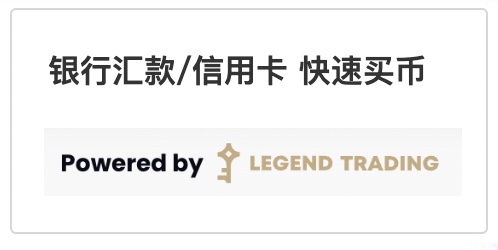 值得信赖的区块链资讯!
值得信赖的区块链资讯!
Blockchain Governance
Governance is the process which outlines the governing framework of a community — what is the decision making process like; when, where and by whom are these decisions made; and how is the reached consensus carried out. So, governance is all about the decision-making process and the resolutions that affect people of the governed community. Governance of a network can take place through societal norms, incentives, power, language, politics, or formal laws prevailing in the governed network.
The most common governance structure that we have heard of is a government — an institutional body that is in charge of creating binding decisions by passing legal amendments. Another example is a corporation — a company governed by the CEO and the board of trustees who make decisions about future goals and strategies of the organization.
The list can go on endlessly — tribe, family, religious institution, so on and so forth. These governance models all share one common theme — they tend to evolve around centralization and consolidated power. For example, if we take a governmental structure of any state we can see how decisions are made, coordinated and enacted in the specially designated institutions ruled by a powerful elite that constitutes only a minority of the society. The significant part of centralized governance is that consensus is achieved by a small group of people and then is implemented in the community as an enacted law that shall not be bypassed.
Governance in blockchain is very important. The revolutionary nature of blockchain lies in its ability to serve users best interest and combat highly centralized and consolidated governance that is prevalent in today’s world. To achieve this, it is significant for the community to have solid governance structure where the decisions are made by fellow members in tandem, concerning when to upgrade the software, what is allowed and what is banned across the network, how to deal with unexpected circumstances, etc. Governance in blockchain aims to be decentralized and distributed and it has a potential to stand out from the traditional models with its formalized structure that is enhanced by smart contracts and transparent voting system, allowing network members to fully part take in the decision making procedures.
Types
As of today, there exist two different types of blockchain governance: off-chain governance and on-chain governance.
Off-chain Governance
The off-chain governance structure is currently deployed by the major cryptocurrencies such as bitcoin and ethereum. The model proposes a balance of power between core developers, users, miners, and businesses, as all these parties represent stakeholders of the blockchain platform. This governance type allows for slower, steadier and gradual evolution towards fully decentralized governance by proposing different changes and upgrades step by step rather than all together. This approach perfectly fits the agenda for the wider blockchain adoption and on-boarding of current non-technical members of the community. The off chain governance resembles the traditional model, as the consensus is usually achieved by the community leaders. These leaders include large mining companies, core developers, business entities, etc. These big players come together, discuss proposed changes and make agreements concerning the upgrades. While off chain structure is not as centralized as the traditional model it still retains some power to the players that belong to the upper echelons. The downside of this system is that it omits those non-technical members from fully participating in the decision making process, which is understandable on one hand, as this people lack technical or finance related knowledge much needed to adequately evaluate the proposed change. However, if these members of the community are dissatisfied with some upgrades they have the right to fork the chain and implement their views using the open-source protocol and rewriting the code. Thus, forking represents freedom of choice of the member users.
On-chain Governance
The on-chain structure is pretty novel and innovative take on governance concept and aims to entirely dodge the structure of legacy institutions and democratize the system by on chain voting mechanism. After voting ends the results are automatically executed according to the rules embedded in the protocol. This consensus structure represents a very novel take on governance and might be associated with risks in terms of lack of use cases and consequently hardships related to evaluating the success/failure of the system. In the on-chain governance, not only developers and miners but also regular users are fully engaged and the power over the network is more balanced, creating an equally distributed power structure with no hierarchy. Even though on-chain structure seems fairer and more relatable to the blockchain ideology of decentralization, there are some doubts arising due to its newness. Some argue that it might be hard and challenging to actually execute the decision using on chain governance, a user participating in decision making might not have appropriate background much needed to evaluate the proposed changes and projects for the software upgrade and maintenance.
Examples
Some of the prime examples of blockchain governance are Dash, Decred, Horizon, and EOS.
Dash
Dash is one of the first decentralized blockchain governance organization managed by the master nodes — users who run the open source cryptocurrency. Dash is an altcoin based on bitcoin protocol, which forked from Bitcoin to focus on the governance management in cryptosphere. The crypto coin has a two-tiered system composed of miners, nodes, and master nodes. Both nodes and master nodes are responsible for regular mining task such as holding the blockchain copy, broadcasting transactions and undertaking transmission validation; however, master nodes additionally are in charge of decision making and they vote on the proposed projects to upgrade Dash.
Currently, Dash is one of the top cryptocurrencies and has a market capitalization of $734,634,792 USD (11/26/18). The currency supports faster transactions with a fully private option available and takes pride in a prompt governance structure. However, as only some members of the community participate in decision-making procedures, some perceive Dash as a not fully decentralized platform. If a user wants to become a master node s/he has to own 100 Dash coins. This buy-in price to become a master node is not seen as fair by many.
Decred
Launched in February of 2016, Decred is a distributed open source public ledger. It is the first cryptocurrency that has used the on-chain governance when in June of 2017 the coin community voted on a proposed protocol project using a binding on chain vote. This way, Decred was the first of its kinds to allow all members to control and decide on which upgrade would get pushed through by establishing the agreement between all the stakeholders. It is required all the community members to adopt the new software version in order the upgrade to become valid. Additionally, the governance model of Decred allows community members to decide not only upon the validity of software related upgrades but also upon any matters related to the protocol. Such events include budget allocations, new contractors onboarding, etc. However, as a bigger number of members is involved in decision making, more time it takes to process the update. Thus, the speed and efficiency of the system significantly drops. In addition to this, some opponents argue that those community members who do not have tech background might have a hard time fully comprehending the perks and drawbacks of a project, consequently making it challenging for them to evaluate a proposal.
Horizen
Another example of blockchain governance platforms is Horizen (previously ZenCash). The cryptocurrency offers a variety of use cases and aims to become a universal platform used to execute thousands of real-life services with absolute privacy, high levels of security and censorship-resistance qualities. The payment system, file-sharing, content-sharing and messaging are a few of its use cases that are currently available. Down the road, the platform aims to open up its governance model and offer it as a service for interested parties.
EOS.IO
Last but not least is EOS.IO. This governance platform is hosted on EOS blockchain platform that allows vertical and horizontal integration of dapps. The EOS technology aims to become a blockchain software that quickly scales, executes millions of value transfers per second for no cost, and serves as a canvas to build new decentralized applications. EOS.IO is one of those dapps which focuses on governance. EOS.IO governance platform allows the token holders to elect 21 block producers (miners) who are in charge of hosting a constitution — a peer-to-peer end-user License Agreement. This agreement will serve as an official document reflecting the expectations of the community members regarding how block producers should control, upgrade and modify different aspects of the network. Opponents of this governance system suggest that sometimes the election procedure involves bribery, as the candidates for block producer positions promise voters a fraction of the reward they will get in case they assume this position. The community will vote for that delegate that promises the highest bribe. Some even suggest that there exists a threat of candidates forming an alliance like a cartel and controlling and coordinating the bribe amount. In either case, the opinions highly contradict promises made by the proponents of this governance structure.
Conclusion
Governance in blockchain is in its nascent phase, just like the blockchain industry itself. As the market reaches wider audiences and the rate of adoption starts increasing we will be seeing more revolutionary changes to the system. Until then we should expect many innovative ideas submerging around how to manage governance in blockchain — some feasible and others not so feasible. But, It is important to remain critical of every novelty and evaluate all of them with fresh and unbiased perspective; only then we would be able to distill the best version of how to govern decentralized distributed ledger of the blockchain.
比推快讯
更多 >>- 加密基金 C1 Fund 宣布购买 Consensys 股权
- Hyperscale Data 公布 11 月末估算总资产达 3.77 亿美元,比特币持仓约 452 枚
- 拒绝 Tether 收购邀约,尤文图斯股价周一飙升近 14%
- American Bitcoin Corp 增持 261 枚 BTC,总持仓达 5,044 枚 BTC
- 特朗普关税是否合法或于明年初裁决,预测市场显示不利于特朗普概率较大
- 某交易员再次逆市押注,看好明年 1 月降息 25 基点
- Pendle 周报:PT-sUSDe 即将登陆 Solana,产品迎一系列关键升级
- Visa 宣布推出稳定币咨询服务,提供稳定币战略与实施方案
- 何一回应币安 Alpha 关闭传闻:没有听说
- 数据:25 枚 BTC 从匿名地址转入 Cumberland,价值约 224 万美元
- 分析师:通胀数据将成为市场焦点,BTC 鲸鱼持有者抛售意愿减弱
- CoinShares:数字资产投资产品上周净流入 8.64 亿美元
- 美 SEC 已撤诉 60% 从拜登时代继承的加密案件,其中多数与特朗普家族有业务往来
- 中国国家数据局与新加坡资讯通信媒体发展局签署合作备忘录,开展区块链等数字技术与创新合作
- 主流 Perp DEX 一览:各平台交易量萎靡均不足 50 亿美元,Pacifica 交易量逆势上涨
- RootData 推出代币解锁悬赏活动:守护数据透明与投资者权益
- 马斯克称今年发布 Grok 新模型,目前年内发布概率仅为 23%
- 摩根大通将在以太坊上推出首个代币化货币市场基金,种子基金规模达 1 亿美元
- 交易员 Peter Brandt:比特币已跌破牛市周期的抛物线式上涨
- Pacifica 高频交易员 30 天创近 200 倍交易量,月积分累计过万
- Octra Labs 联创:不会取消 ICO,而是会将所有未售代币退出流通
- Artemis:Solana 在关键链上指标领先市场,交易笔数为 BNB 的 18 倍
- Bitget TradFi 板块进入公测阶段,同一账户中交易黄金、外汇等资产
- 分析:2026 年加密货币将走向主流,成为支撑整个体系的轨道
- 麻吉近 3 小时持续加仓 300 枚 ETH 多单,持仓金额升至 1182 万美元
- Moca Network 推出数字身份与声誉平台 MocaProof 测试版
- 数据:曾做多 ETH 亏损 330 万美元的巨鲸再次入场,开立规模 1,740 万美元的 ETH 多单
- Do Kwon 在美获刑 15 年后,仍可能在韩国面临第二次审判
- 观点:无论谁接任美联储主席,美财长才是实权拥有者
- 日本央行最快将于 2026 年 1 月开始逐步出售其持有的 ETF 资产
- 《金融时报》:稳定币将在五年内迎来“超级周期”重塑银行业
- BiyaPay 分析师:Circle 获 OCC 批准设立信托银行,长期利好难改短期股价承压
- 交易员 wyzq.eth 出售 553,000 枚 RAVE,盈利 10 万美元
- 分析:美联储降息后资金流出美国,欧亚资产吸引资本
- 数据:340.03 万枚 TON 从匿名地址转出,经中转后流入 TON
- 市场分析:鲍威尔鸽派言论以及美联储鸽派反应机制助力黄金升势
- Pieverse 推出代理银行模式:AI 代理成为账户持有者
- 数据: “10 月 11 日内幕巨鲸”近 24 小时加仓 ETH 多单约 1.53 万枚,其账户总持仓规模达 7.23 亿美元
- 香港 JPEX 案 8 名被告被控欺诈等罪名,案件押后至明年 3 月再审
- 新加坡星展银行从 Galaxy Digital 再次接收 2000 枚 ETH,价值约 627 万美元
- 消息人士:谷歌 Gemini 最新模型更多细节泄露,相关预测显示 3 天内必发布
- 数据:标普 500、纳指和道指期货均上涨,涨幅分别为 0.34%、0.28% 和 0.37%
- 去中心化智能网络 DGrid 宣布:全球节点公售与创世挖矿将于 2026 年元旦同步启动
- OKX 将下线部分永续合约
- MGBX 平台面向新用户推出限时激励活动,最高可领取 6,888 USDT 合约体验金
- 分析师:链上指标显示 BTC 持有者正处于亏损中,当前市场面临局部压力
- GoPlus:疑似系“项目方管理地址被黑客控制”导致 Ribbon Finance 遭攻击
- 数据:过去 24 小时全网爆仓 2.95 亿美元,多单爆仓 2.32 亿美元,空单爆仓 6,327.07 万美元
- 何一:希望将 Binance 变成花园,每个成员都能长成参天大树
- 瑞典 Klarna 宣布与 Stripe 旗下 Privy 合作,联合开发面向用户的加密资产钱包
比推专栏
更多 >>观点
比推热门文章
- Hyperscale Data 公布 11 月末估算总资产达 3.77 亿美元,比特币持仓约 452 枚
- 拒绝 Tether 收购邀约,尤文图斯股价周一飙升近 14%
- American Bitcoin Corp 增持 261 枚 BTC,总持仓达 5,044 枚 BTC
- 特朗普关税是否合法或于明年初裁决,预测市场显示不利于特朗普概率较大
- 某交易员再次逆市押注,看好明年 1 月降息 25 基点
- Pendle 周报:PT-sUSDe 即将登陆 Solana,产品迎一系列关键升级
- Visa 宣布推出稳定币咨询服务,提供稳定币战略与实施方案
- 何一回应币安 Alpha 关闭传闻:没有听说
- 数据:25 枚 BTC 从匿名地址转入 Cumberland,价值约 224 万美元
- 分析师:通胀数据将成为市场焦点,BTC 鲸鱼持有者抛售意愿减弱
 比推 APP
比推 APP








